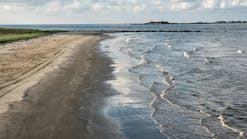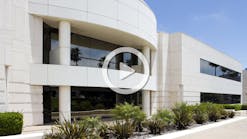The Ship Builders Dilemma
In 2013, the National Shipbuilding Research Program (NSRP) conducted the Removal of Metals from Shipyard Stormwater Runoff study. The three entities that funded the project include NAVSEA, Ingalls Shipbuilding and Vigor Industrial. The environmental firm who conducted the study was Environmental Compliance Services (ECS.)
The Problem:
The study test locations used absorbent polymer sponges: MetalZorb® Sponge Technology. Shipyards participating in the study included Huntington Ingalls, Inc. – Ingalls Shipbuilding Division, Pascagoula Operations (Ingalls), BAE Systems, Mobile Shipyard (BAE), and Vigor Industrial and Marine (Vigor). The goal of the project was to provide interested shipbuilding members with a contaminate control removal system that has substantially lower required capital, operating, and maintenance costs and requires less technical expertise than traditional multi-stage filtration systems.
ECS selected sites, such as blast sites that were highly contaminated and had high concentrations of heavy metals. Each test site did a pre-control water test to determine the PH of the water as well as effluent concentrations of zinc (Zn), copper (Cu) and the total suspended solids in the water samples. Each site selected a stormwater solution to install and then did a post-study evaluation of the water up-gradient and down-gradient of the treatment solution to determine: a) ability of various adsorbent materials to decrease contaminant concentrations in stormwater runoff, b) investigate overall removal efficiency over time, and c) determine the most effective control technology based on results and cost.
Cleanway® System Installed at Naval Yard:
At a naval ship construction yard in the Gulf of Mexico, CleanWay Environmental Partners, Inc. installed column filters, six foot absorbent booms and a final flow-through chamber. CleanWay’s MetalZorb sponge media was used as the contaminant removal material. MetalZorb technology consists of an open-celled cellulose sponge that contains a water-insoluble polyamide chelating polymer for the selective removal of heavy metals. Sponges have high affinity for heavy metals (i.e., Cd, Cu, Zn, Fe, Au, etc.) and a low affinity for more common aqueous constituents.
MetalZorb was originally designed to remove heavy metals from groundwater at CERCLA Superfund sites where heavy metal constituent concentrations were reduced by up to 97 percent.
Test Site Geography and Challenges:
The CleanWay solution was installed at a test site with a number of geographic challenges. Because the water conveyance trenches were on downhill slopes, water flowed quickly and required a way to control the flow to help absorb contaminants. CleanWay designed a system using MetalZorb in absorption booms with weighted compartments that could be shaped to fit the rainwater conveyance trenches. CleanWay created barriers within the booms, as shown in the diagram, to control the speed of the water running down the trench and to allow the water to have more contact time with the MetalZorb media near the end of the trench.
Results of the Study:
The Removal of Metals from Shipyard Stormwater Runoff study used these additives for metal absorption: MetalZorb, Filtrexx EnviroSoxx® and Ultra-Filter Sock®. A simple mechanical filtration method was also tested that included simple mechanical filtration, Filtrexx® Sediment Control, coconut husks and pine bark. MetalZorb showed the highest performing results in heavy metals removal. The percentage of copper and zinc was reduced by 90 percent and non-targeted (Na+, K+, Ca+, Mg+) ions were near-zero, preventing the media from becoming quickly saturated with non-target constituents.
Editor's Note: Scranton Gillette Communications and the SGC Water Group are not liable for the accuracy, efficacy and validity of the claims made in this piece. The views expressed in this content do not reflect the position of the editorial teams of Water & Wastes Digest, Water Quality Products and Storm Water Solutions.







